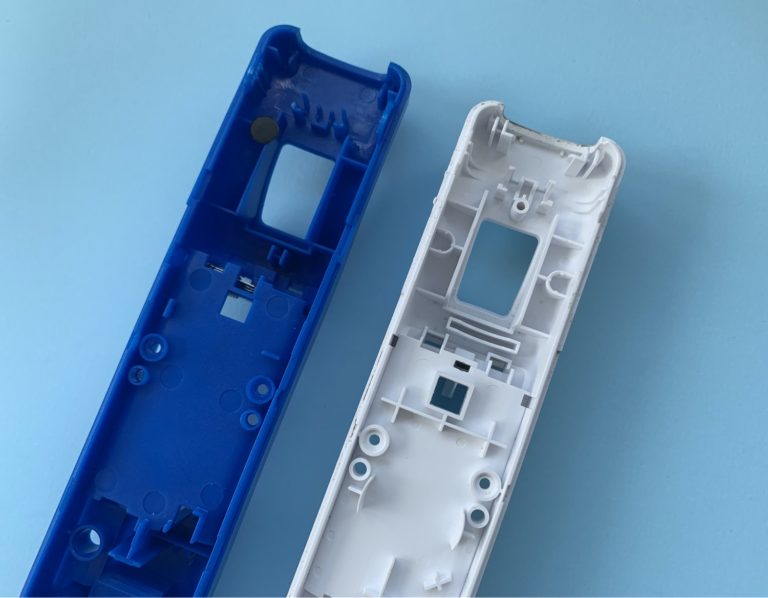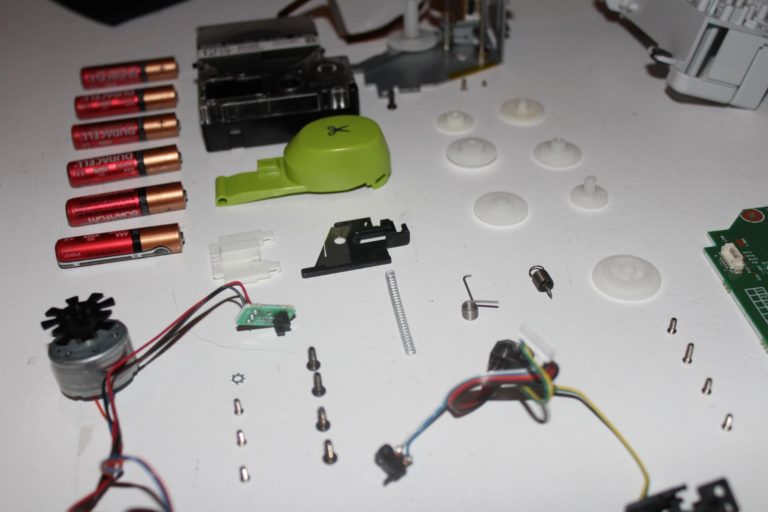Fictiv got me a scale for Valentine’s Day. I think someone is trying to say that second helpings of the catered lunches aren’t doing me any favors. Whatever; when life gives you subtle hints in the form of a personal health product, you tear that thing down!
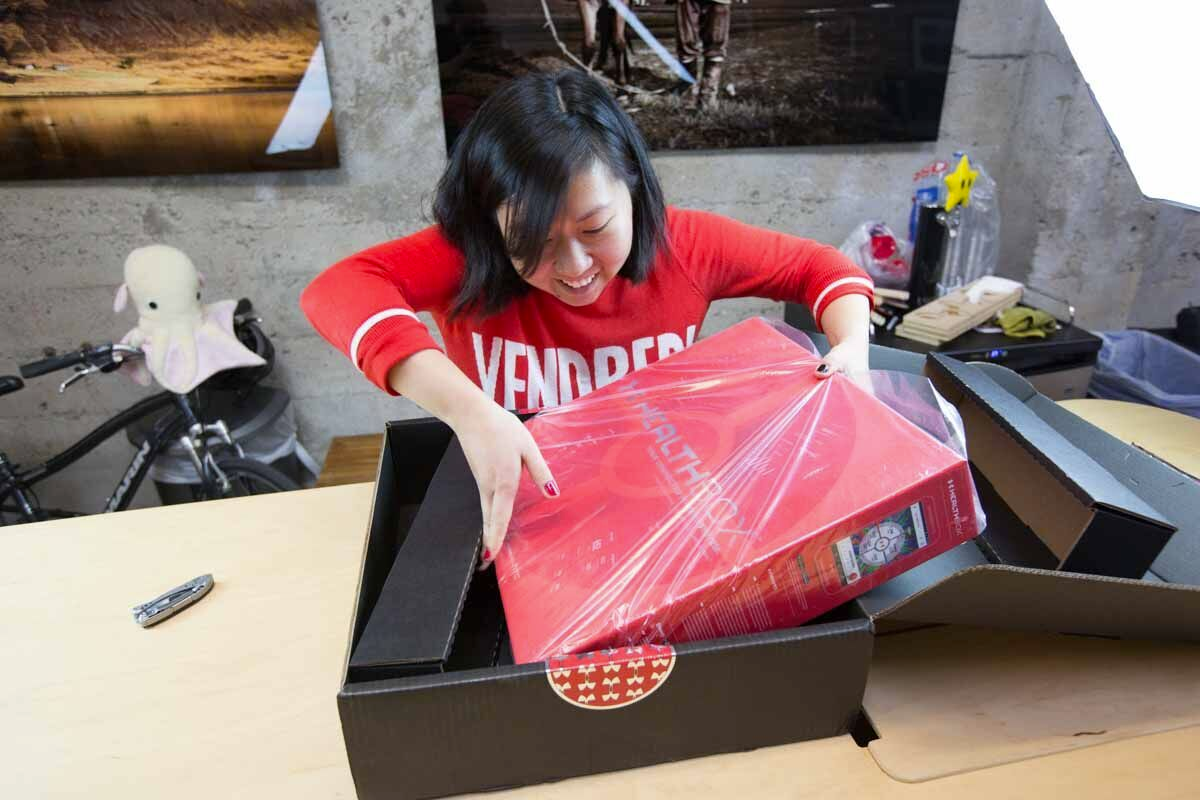
The UA Scale came as a part of of the Under Armour Health Box. A wearable fitness wristband and a heart-rate monitor chest strap came along with the scale in a big red box. The gift box is extremely handsome, as it should be, for a $400 package of electronics.
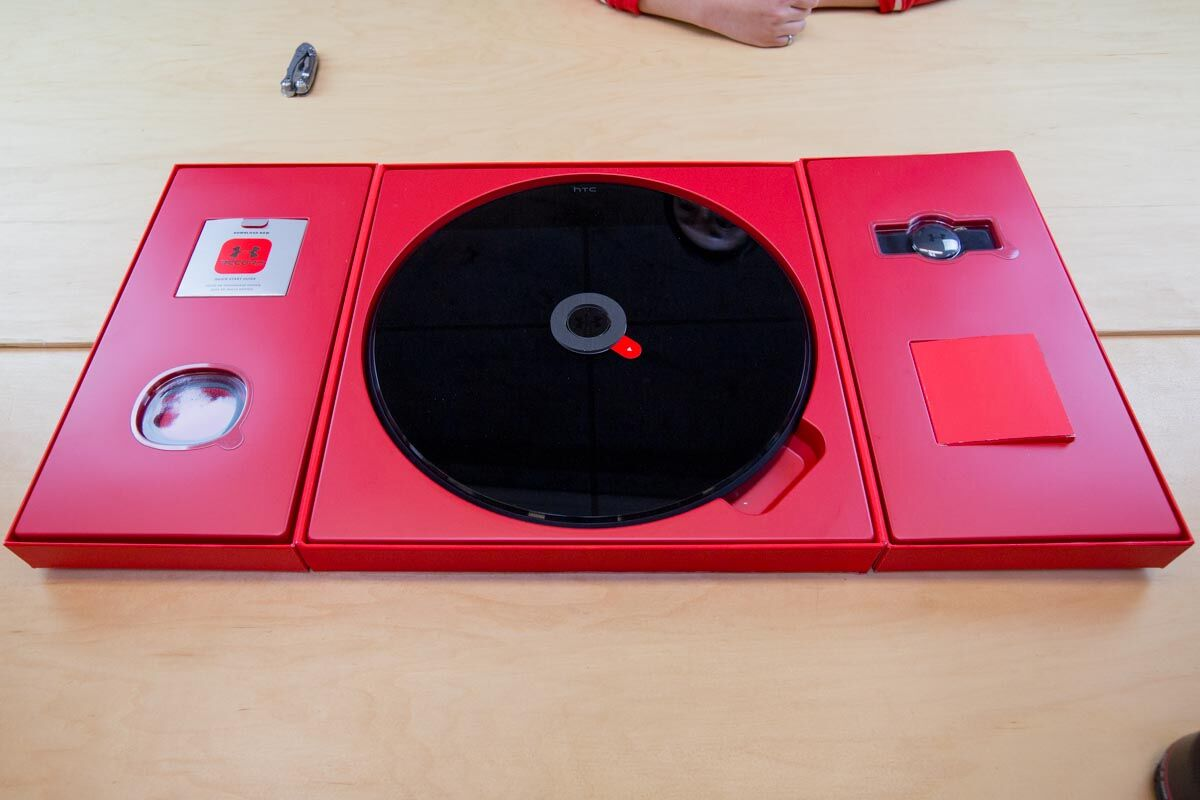
We’ll be tearing down the wristband and the heart-rate monitor next week. For now, let’s check out the scale.
The scale measures your weight and body fat percentage, displays this information on a LED screen, and syncs the data to the cloud, using WiFi. The functionalities are very much similar to the smart scales made by Fitbit and Withings. The scale is branded as Under Armour, but a small HTC logo on top of the scale tells us that it’s engineered and manufactured by HTC.
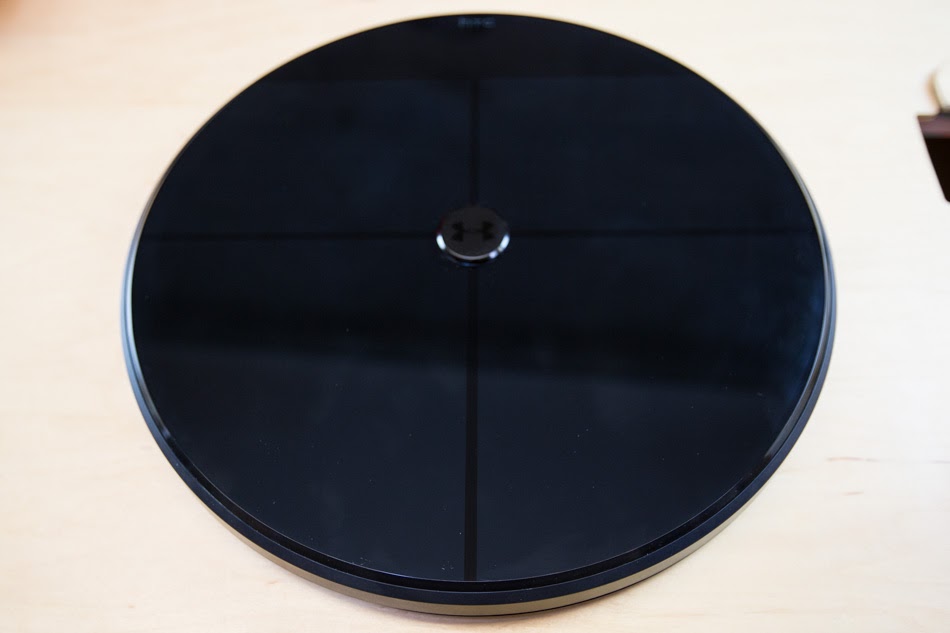
I like the circular form factor of the UA scale. The Fitbit and Withings scales (both of which I have personally owned) have been squares with rounded corners, so it’s nice to see something a bit different on the market.
The top of the scale is a solid piece of glass, without a point of entry, so I flip the scale upside down to get in through its belly.
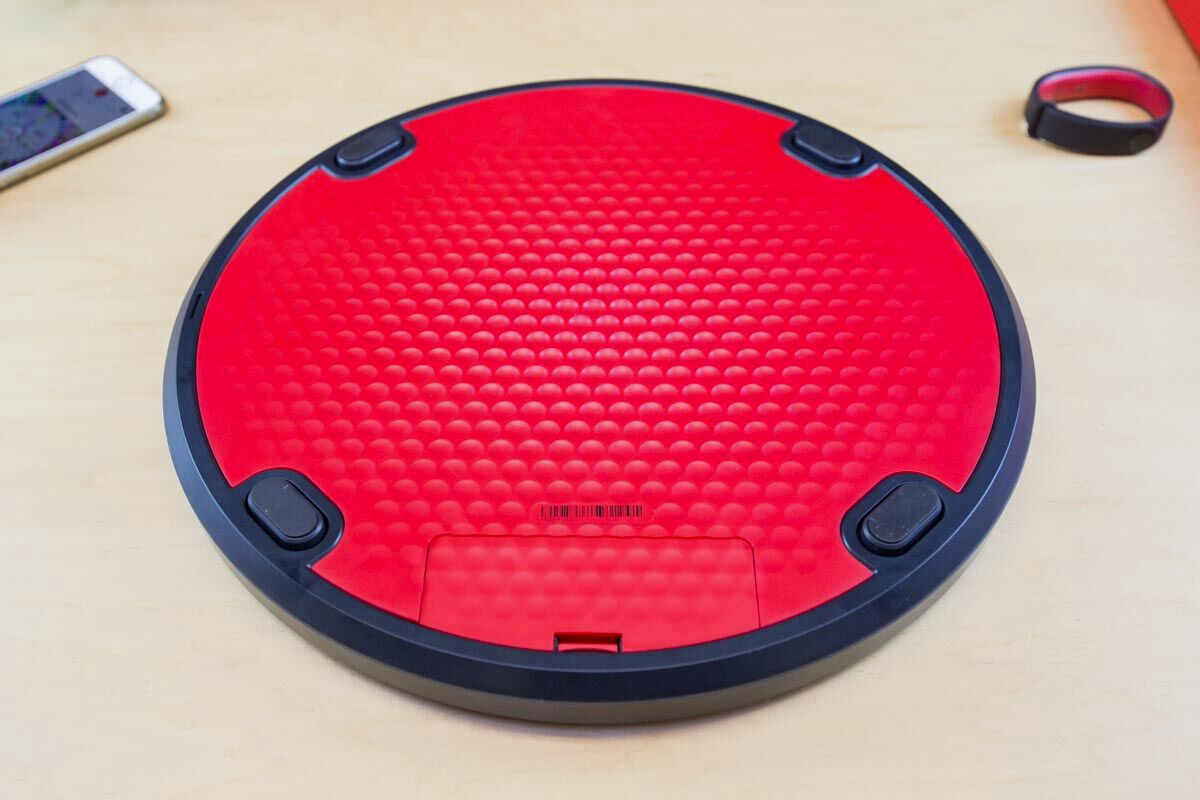
The underside is delightfully beautiful. The circular indentations on the bottom panel not only add visual interest, but increase the stiffness of the large panel.
The bottom panel comes off easily, fastened by a few cantilever clips, also known as snap fit joints.
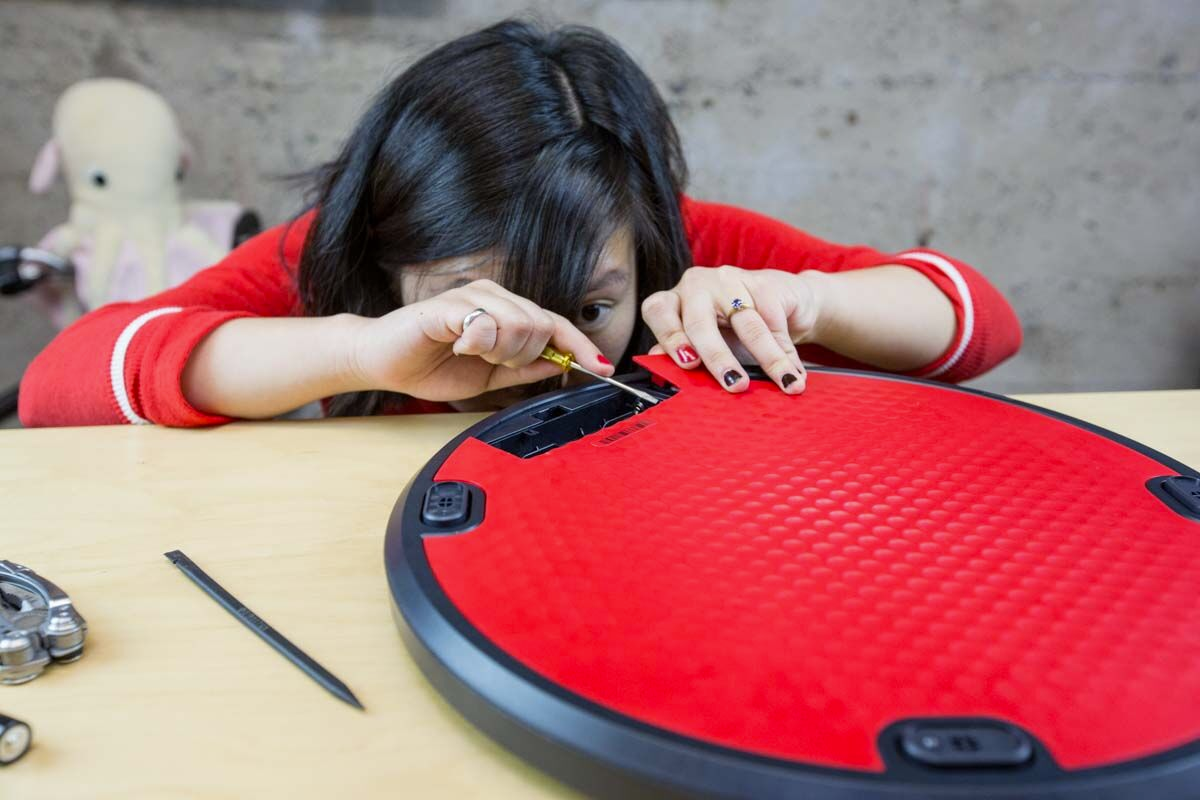
Everything is in plain view after the bottom panel comes off and the inside is quite simple: we see two PCBAs in plain view and some wire harnesses running throughout.
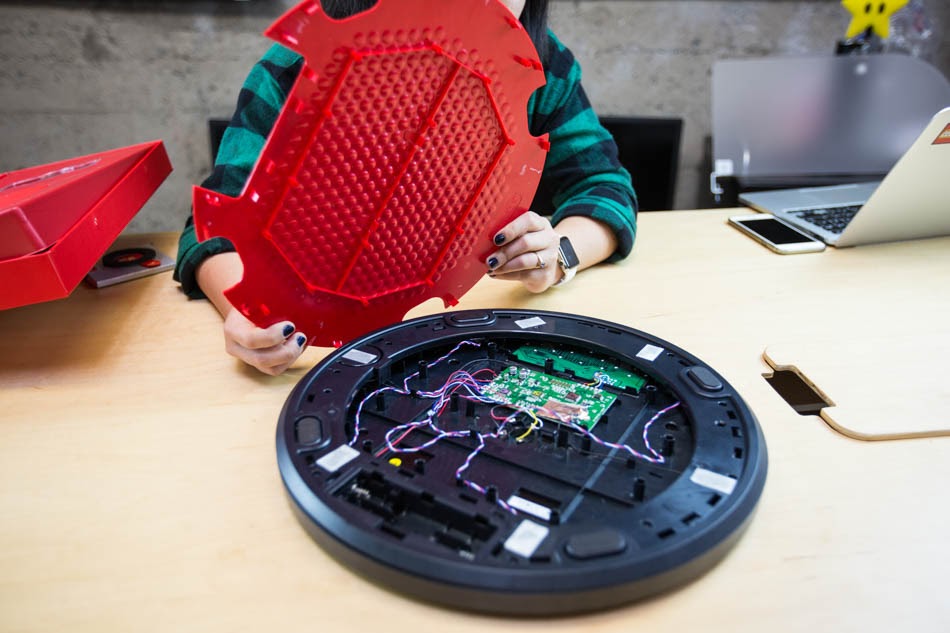
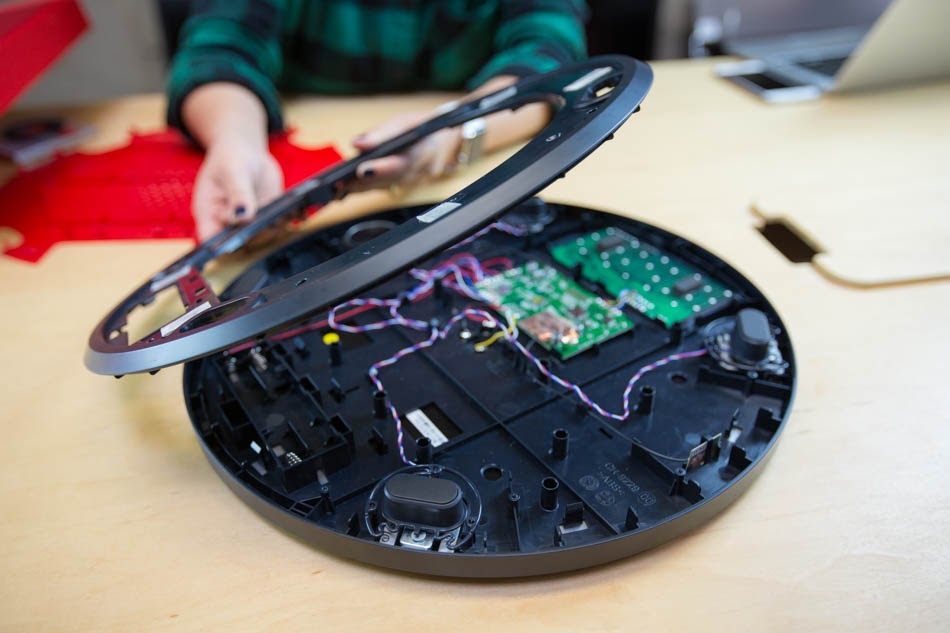
The PCBAs are held to the enclosure by snap fit clips as well. No fasteners necessary!

The main PCBA contains the usual data processing electronics, as well as WiFi and Bluetooth chips.
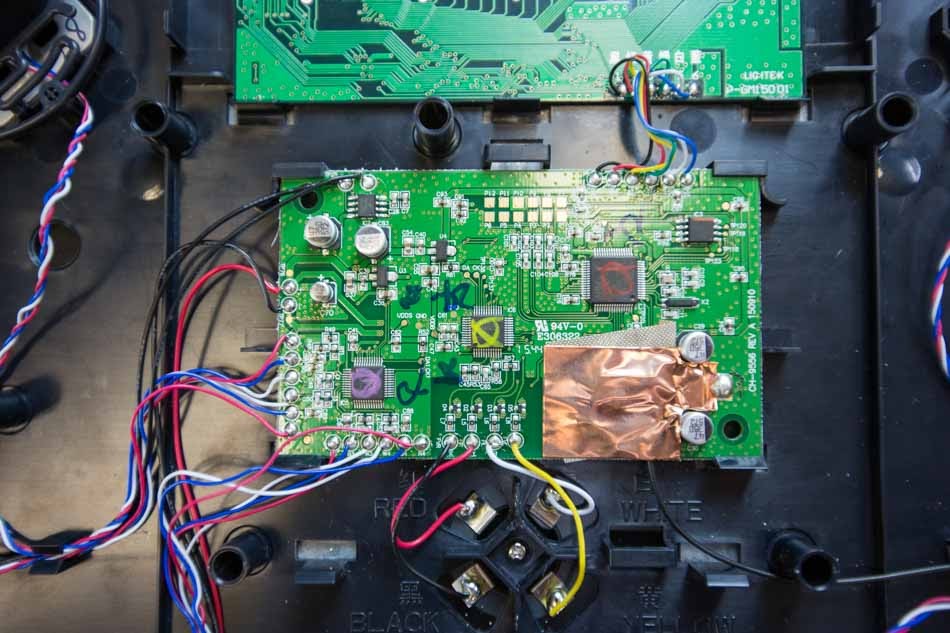
The antenna is connected to the main PCBA by a coaxial connector and thin cable. It’s placed very close to the edge of the scale for optimal RF performance. If the antenna was placed at the center of the scale, the wireless performance would suffer because the thick tinted glass top attenuates the signal.
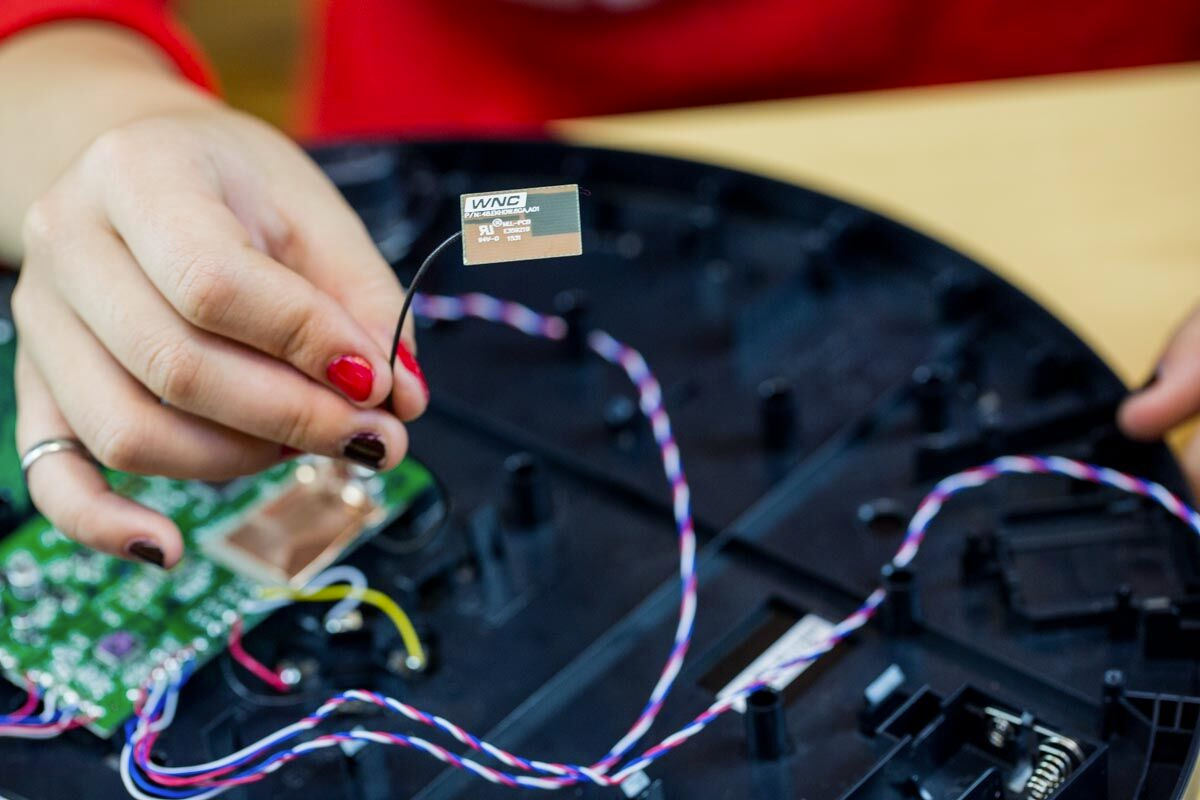
These four colored wires connect to the body fat-measuring electrodes. Look closely, and you’ll see a neat Design for Assembly (DfA) aid: raised words (engravings on the mold) in English and Chinese tell the assembly workers which colored wire should be soldered to which pad.
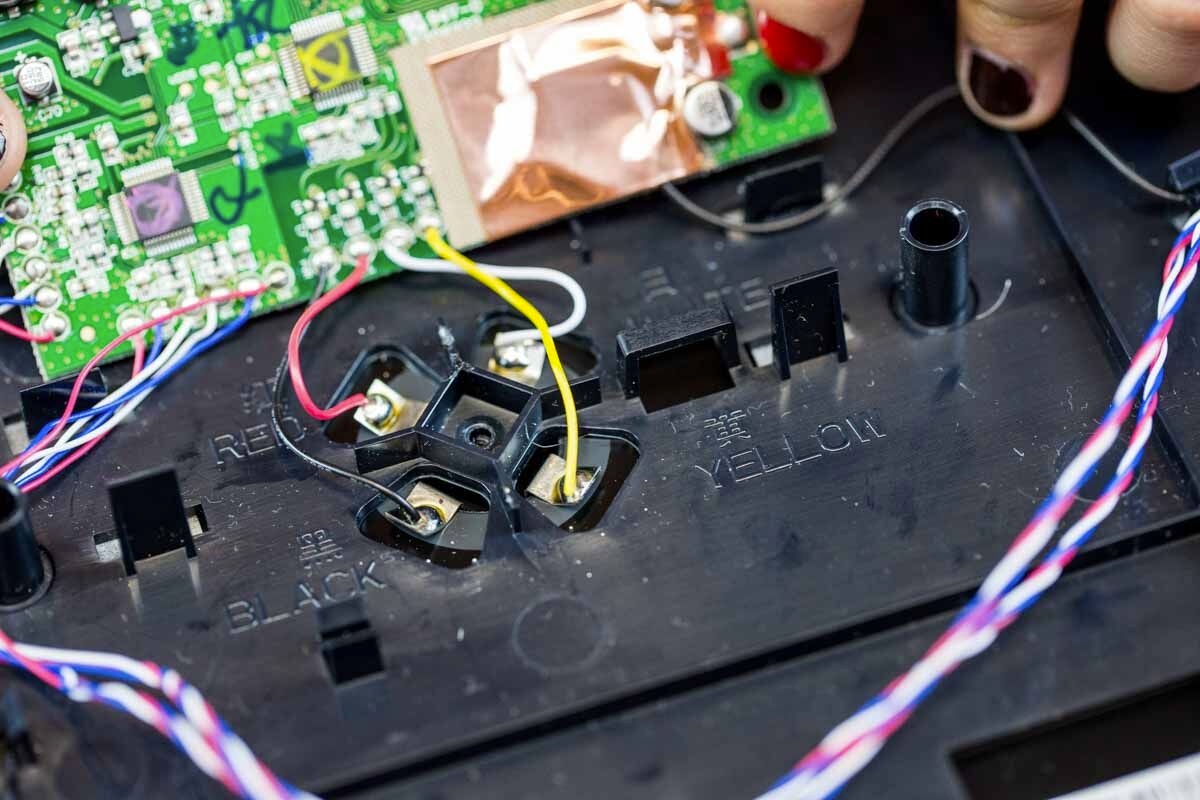
The body fat electrodes–thin panels of sheet metal–are sandwiched between the glass top and the plastic enclosure. The glass top is conductive, thanks to an Indium Tin Oxide (ITO) coating.
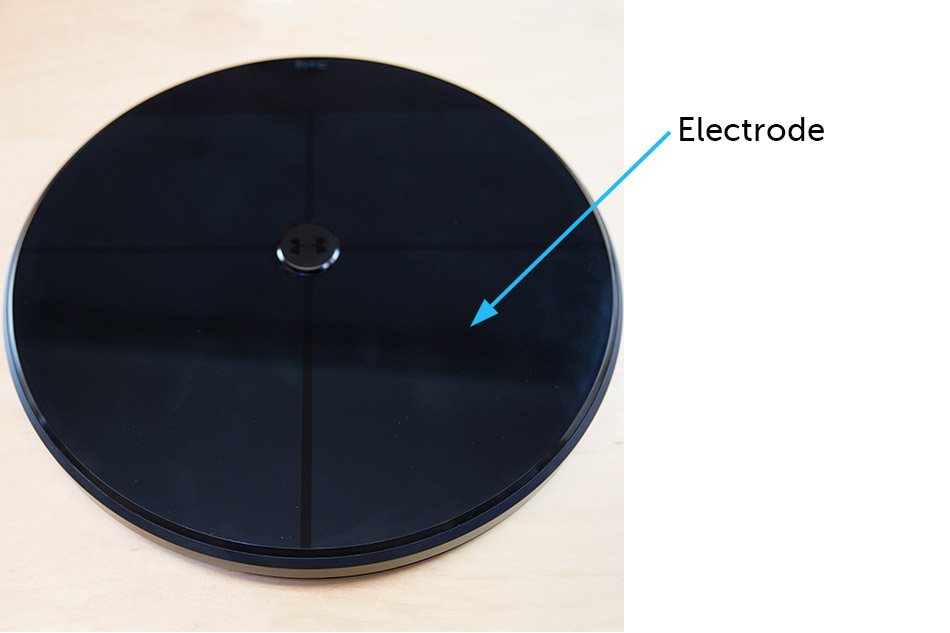
When you step onto the scale, the electrodes under the balls of your feet send a small alternating electrical current up your legs. This current crosses the pelvis and travels down the other leg, exiting through the detecting electrodes under your heels. Finally, an impedance measurement is taken off the circuit your body just helped complete.
Muscle contains more water than fat; therefore, it conducts electricity better. So, the greater the impedance that the sensors measure, the more body fat you have. The scale then uses this measurement and your weight to calculate a body fat percentage. This method is called bioelectric impedance analysis.
Body-fat percentages measured on this type of scale isn’t very accurate, though; if you’re dehydrated, this measurement will skew high. Also, it’s only measuring the bioelectric impedance of your lower body.
The scale has four feet on its underside. These are the keys to measuring your weight.
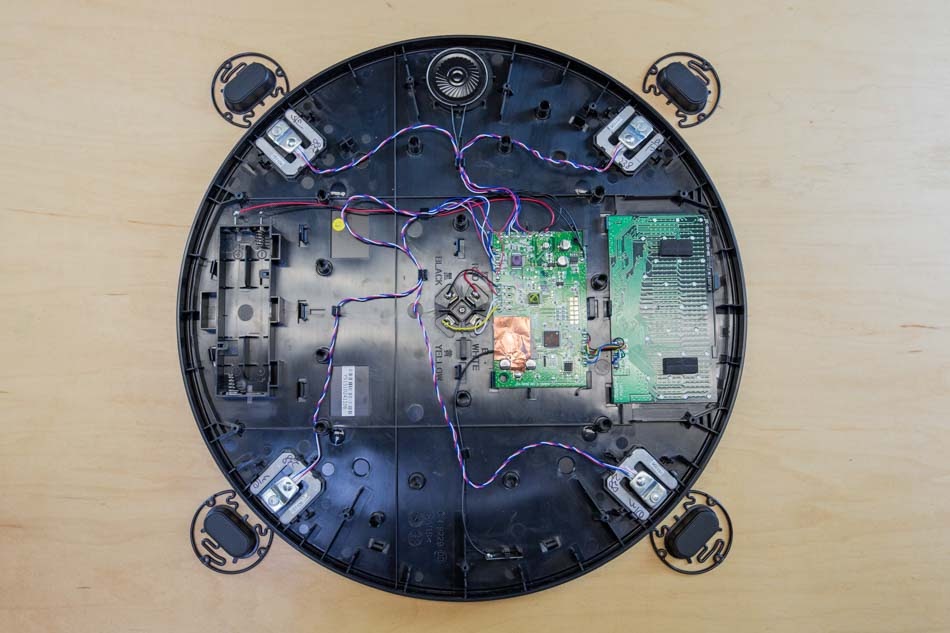
The feet are molded plastic. They are located with cross-shaped bosses to the enclosure. Molded spring features allow these to move up and down freely.
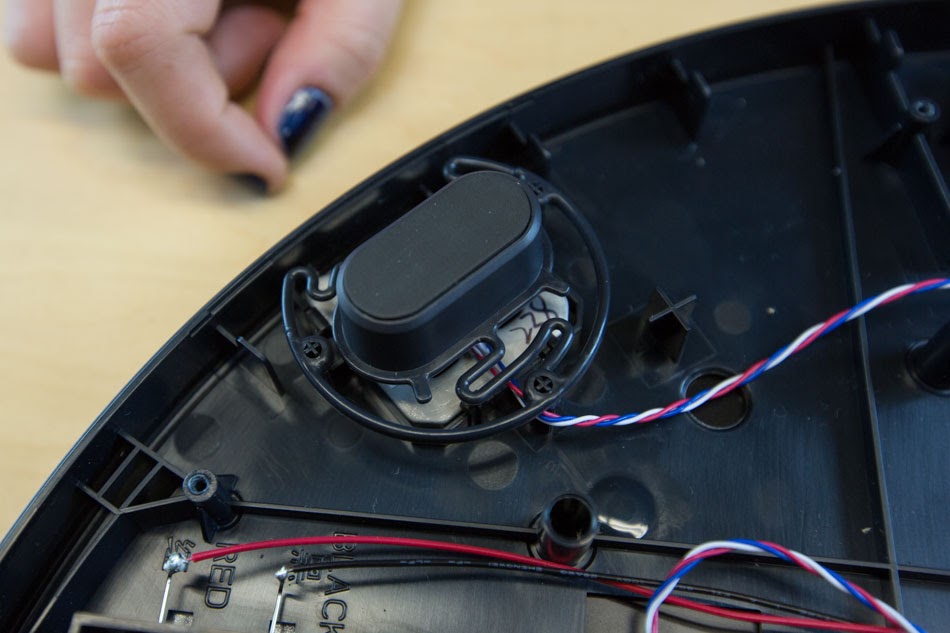
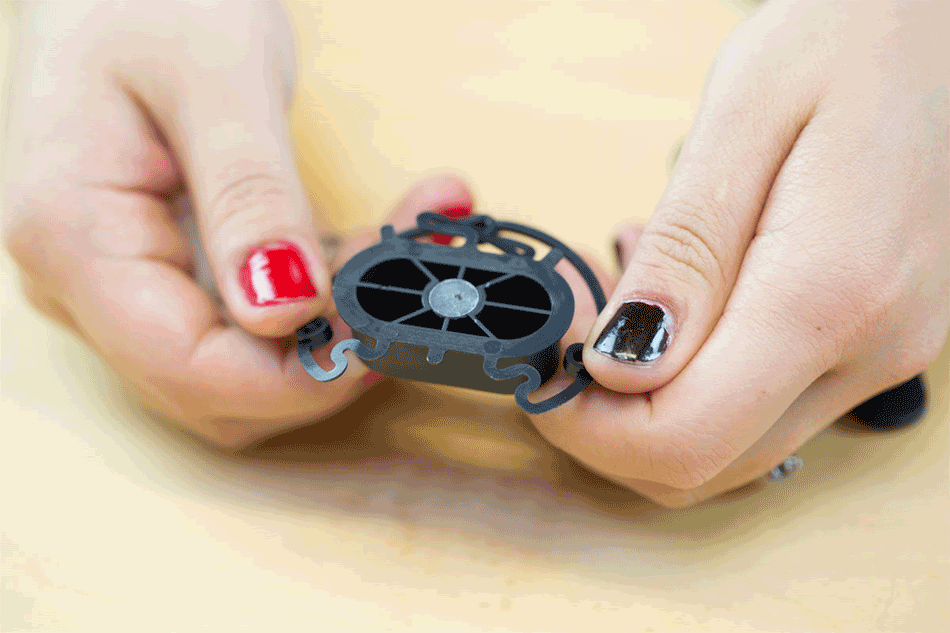
The center of the feet is aligned to the cantilevered middle beam of a strain gauge, also called a load cell. This type of sensor allows us to measure force electronically.
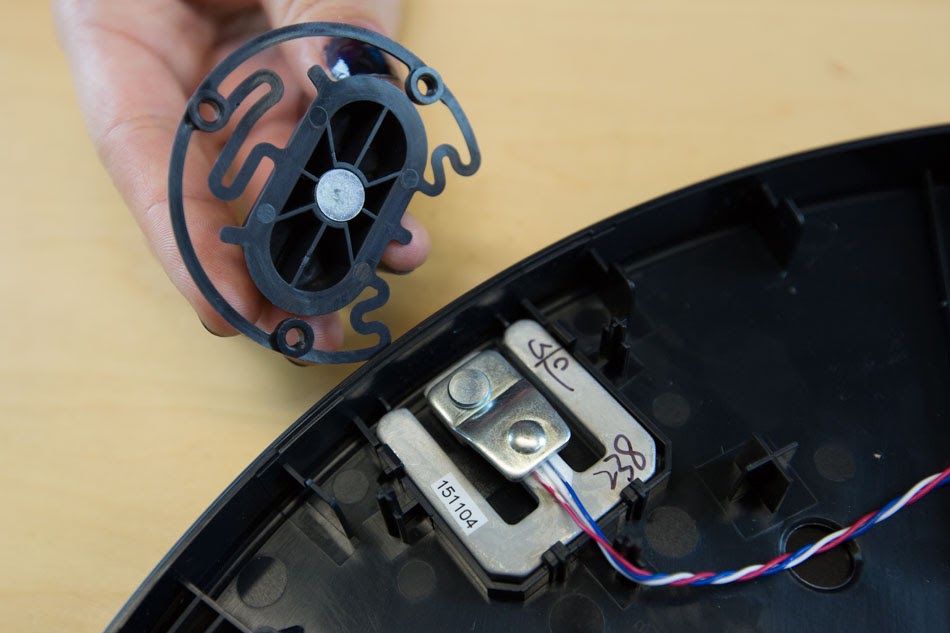
When you stand on the scale, a downward force is applied to all four feet of the scale. The plastic feet transfer this force to the middle beam of the strain gauge and the middle beam elongates very slightly: It experiences strain. This causes the strain gauge’s electrical resistance to increase. The amplitude of this change is used to calculate your weight.
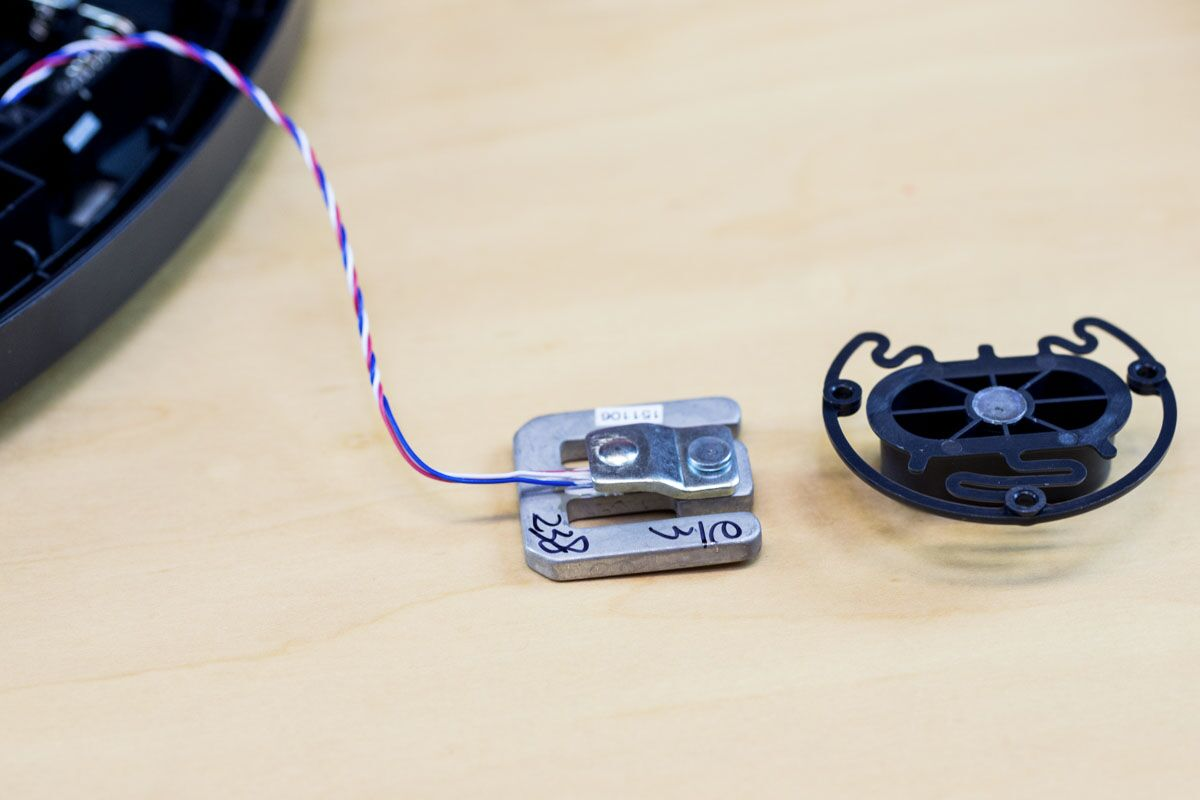
Now that your body fat percentage and weight have been measured, the results pop up on a screen. This is actually an LED matrix display, the fancier cousin of the LCD matrix displays typically found in calculators. These displays are great for electronics projects and prototyping; I recommend this starter kit if you want to play with one.
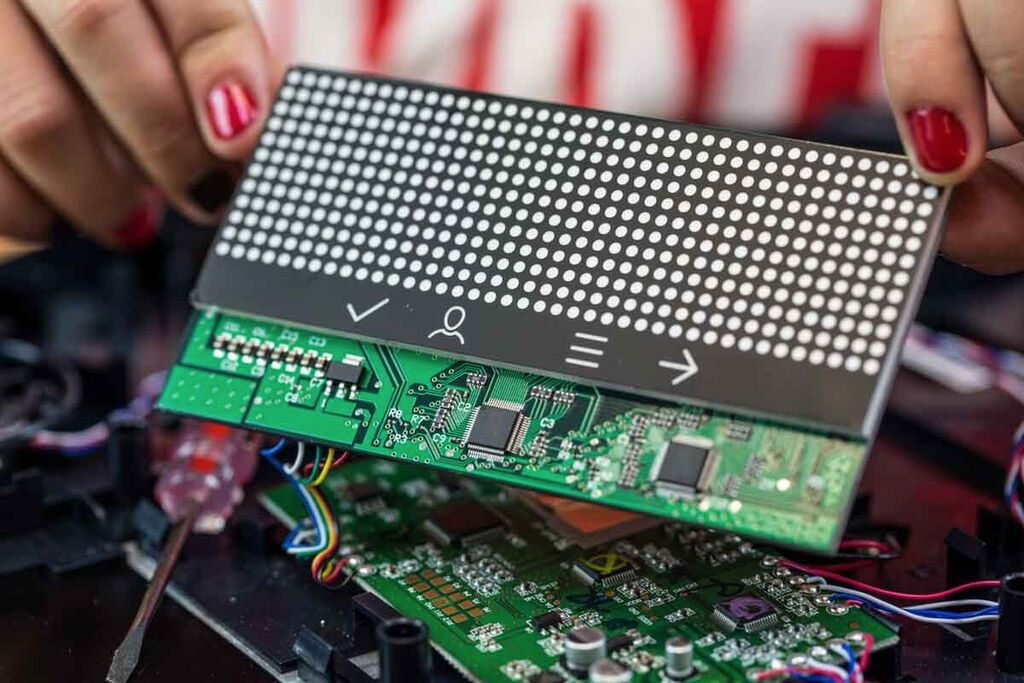
We also found a rather large speaker inside. We didn’t expect to see this, because Under Armour didn’t advertise any audio features. We’ll have to put the scale back together to see what this does.
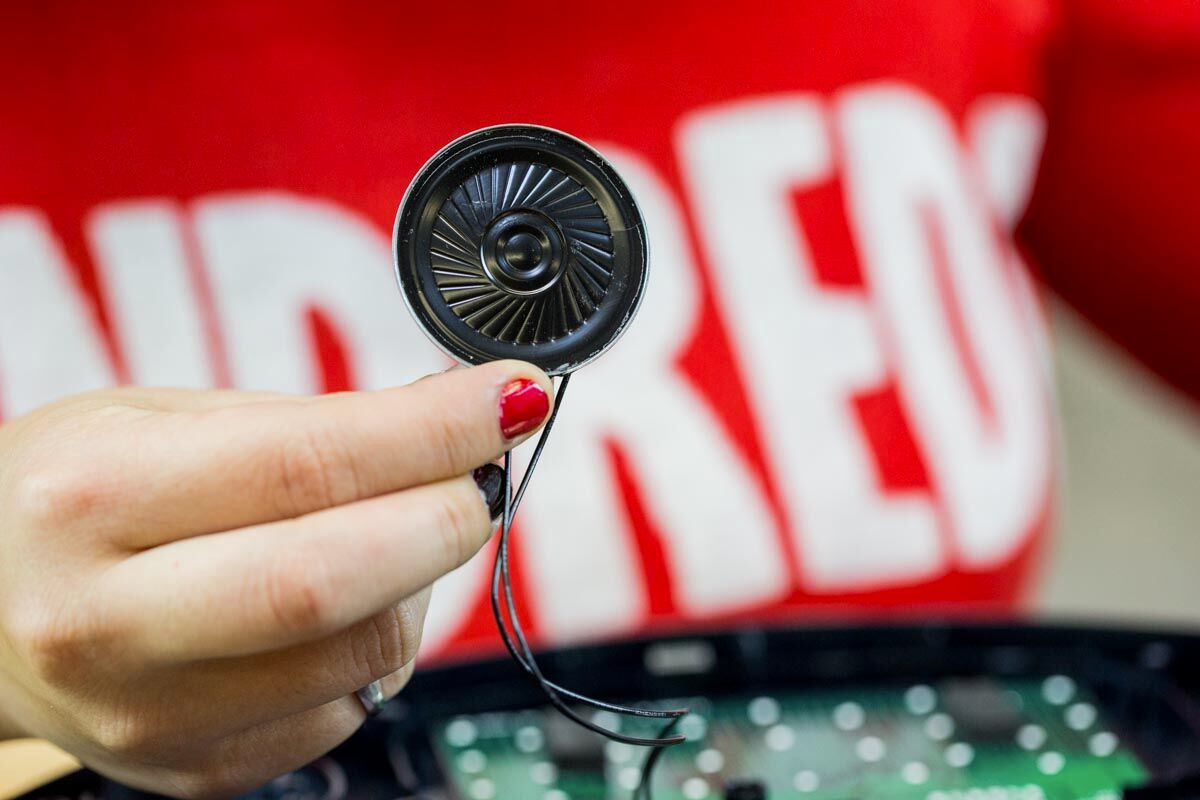
The UA scale is super easy to take apart without damaging anything, and we were actually able to put this back together. I imagine that the factory assembly process is pretty painless, and re-works are a piece of cake, should quality control catch any problems.
Although the UA Scale is not sold separately from the Health Box (MSRP $400), we deduced that its retail value is about $120. (The UA band is sold separately at $180 and an older version of the heart rate monitor chest strap retailed for $99.99.) This is in line with the pricing of smart scales by Fitbit ($129.95) and Withings ($149.95).
The UA scale’s BOM cost is likely under $20, excluding packaging. Generic ITO glass-top scales can be easily found for around $50, and we have seen some as cheap as $20. The UA scale definitely stands out in its design and build quality, but the functional components are not all that different from its generic competitors.
However, similar to most electronics products these days, the hardware spec is only a small part of a product’s overall value. The UA branding by itself can command a premium price; the mobile app experience, the UA product ecosystem, and the design also add value to the product.
